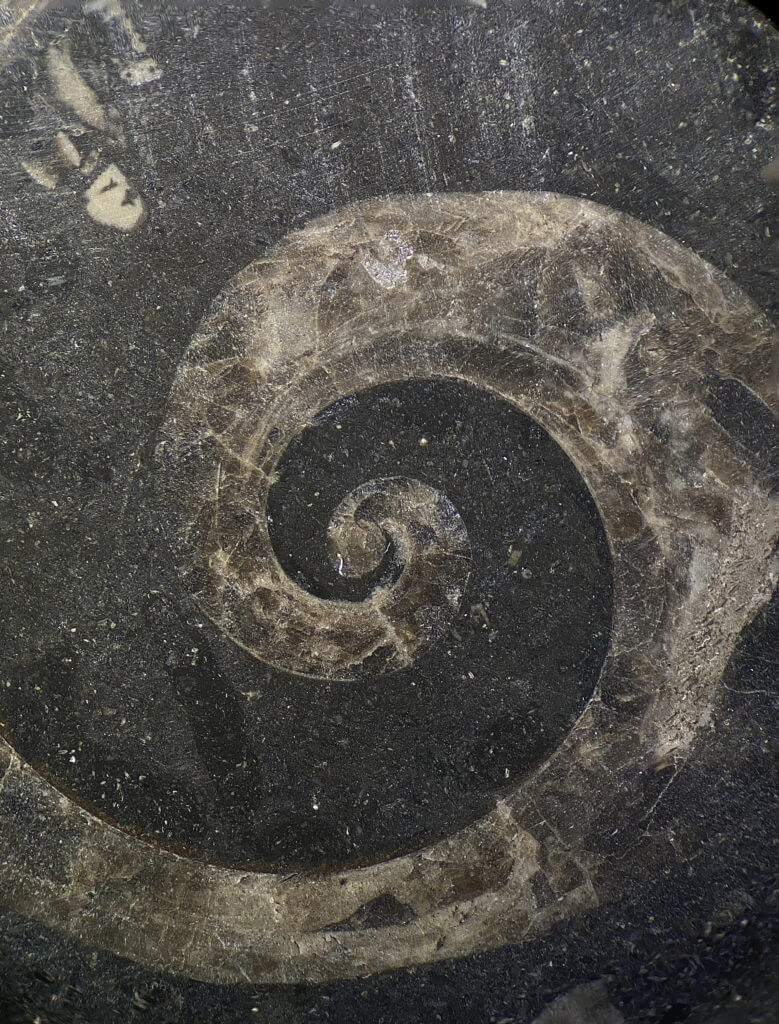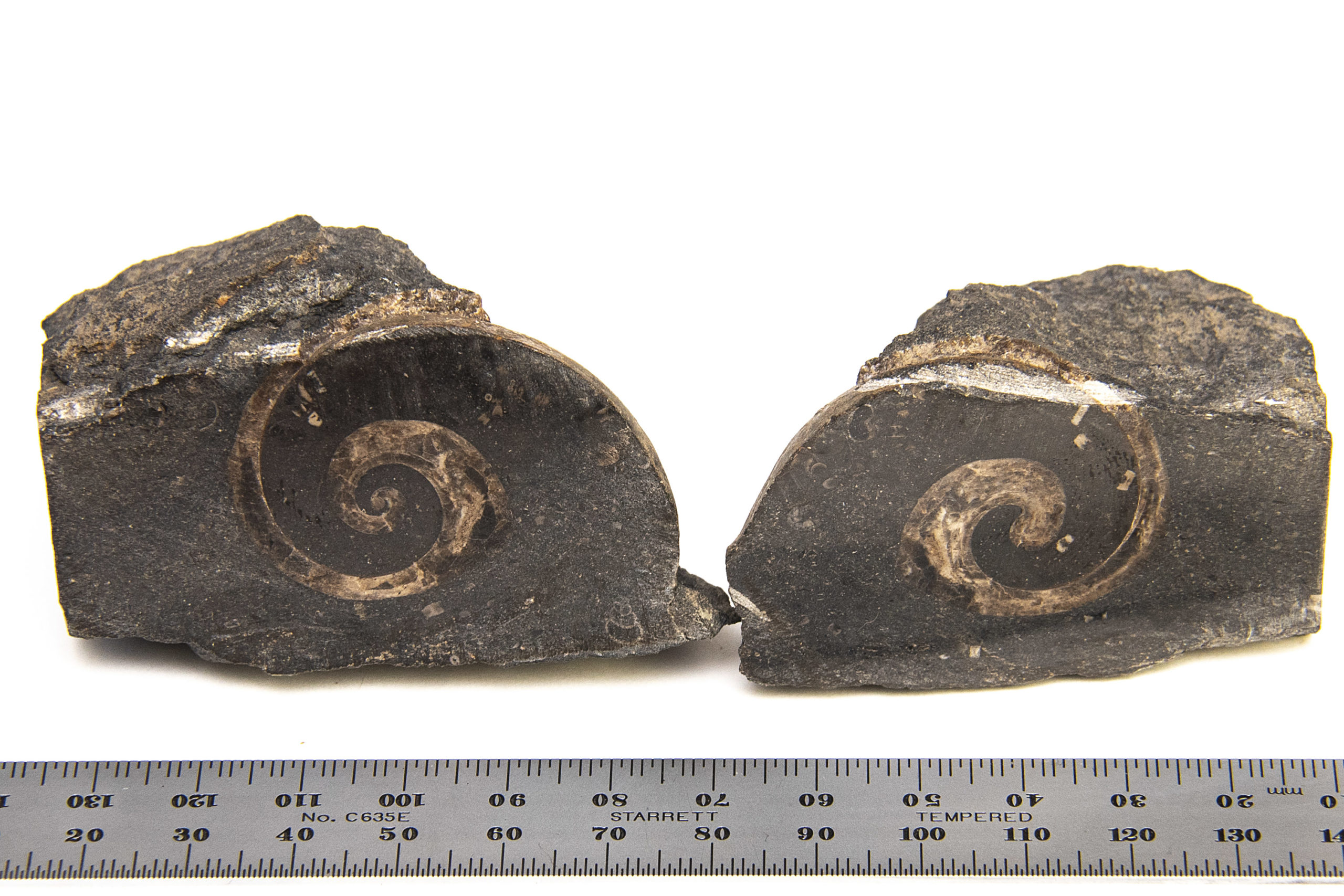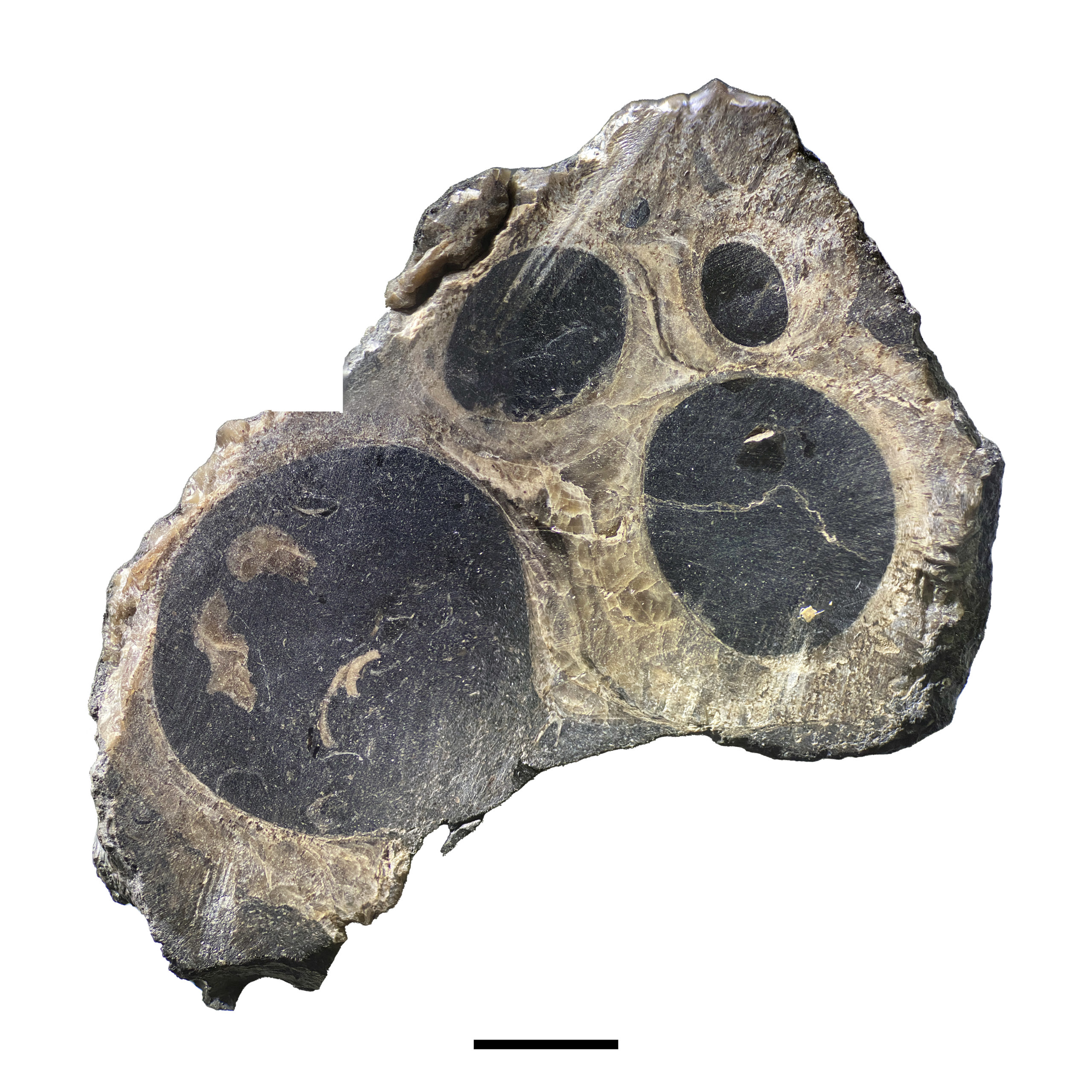I’ve been busy writing elsewhere, so the posts portion of this website is starting to age. Nevertheless, I have discovered several new things over the past few months, and I wanted to share at least one. I found a large specimen of a member of the Bellerophontidae, but in the Brush Creek limestone, these are near impossible to remove with an intact shell. So with an exposed steinkern already staring back at me, I cut it in half with a tile saw, and I am glad I did.
You can see many things at work in the cross-section, including two or more distinct layers of shell. This layered look is because as the gastropod’s mantle secreted the shell, it did so on top of older growth, creating more than one layer.

These specimens seem larger than most I find locally, save for Strobeus. In four years of searching, I have only seen one other quite as large from the same place, and it also has lost nearly all of its shell. The steinkern is so smooth that it gleans light off it when viewing.
Identification would be impossible. After diving deeper into the family, I found that Yochelson dismissed attempting identification from a steinkern in this family. Even the best invertebrate paleontologists could not tell popular genera of the family, Bellerophon, and Knightites, apart in this state of preservation.

Shansiella in Cross Section
After cutting the Bellerophontidae specimen, I next wanted to cut another gastropod in half. I have an extensive collection of Shansiella, including some that are very rough and covered in a stubborn limestone matrix. Naturally, the next step was to cut one of these in half. I studied some of Batten’s published cut specimens of Shansiella from 1972 that he collected in nearby Shelocta, Indiana County.
Performing the cut was worth it because many of the delicate inner details revealed themselves—for example, the individual layers built with calcitic material and the filled-in earlier whorls. The shell material on these is thick; you can see it in the figure below.


References
- Batten, R.L., 1972, The Ultrastructure of Five Common Pennsylvanian Pleurotomarian Gastropod Species of Eastern United States, American Museum Novitates, No, 2501, Aug 21, 1972, pp. 1-34

